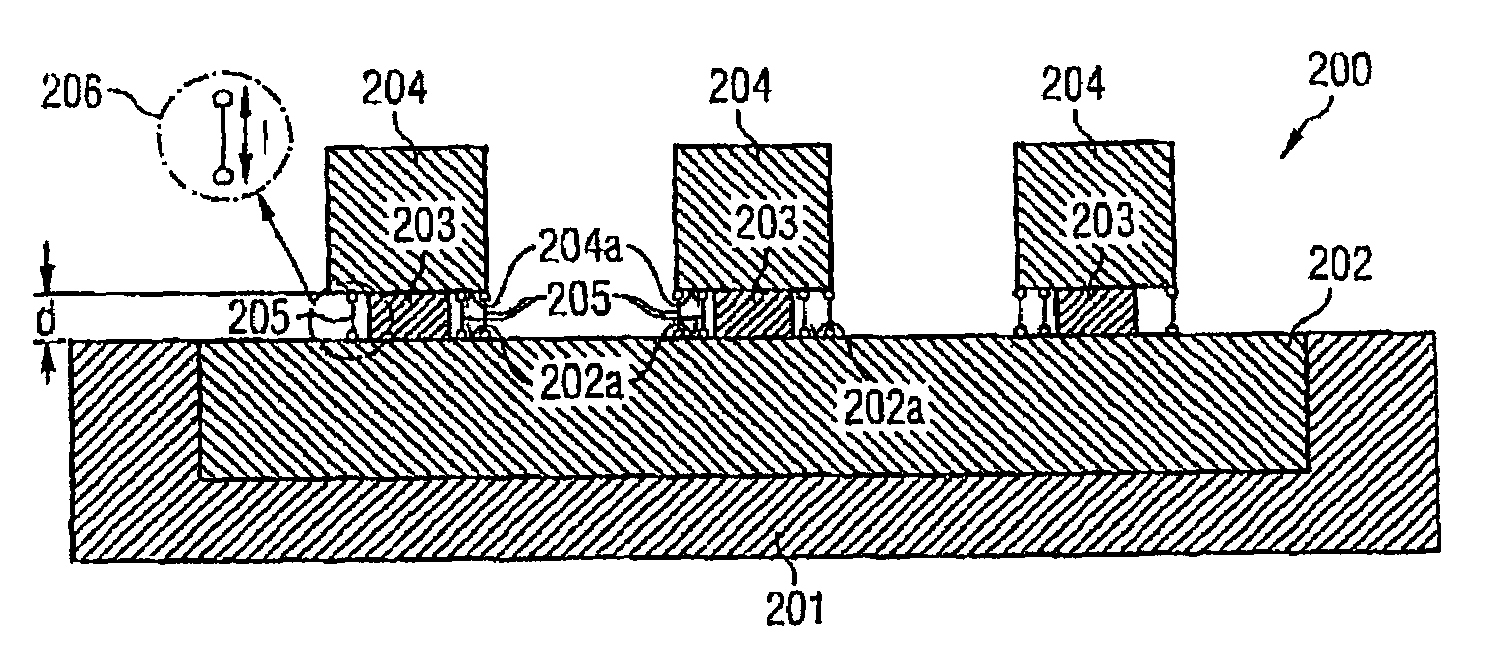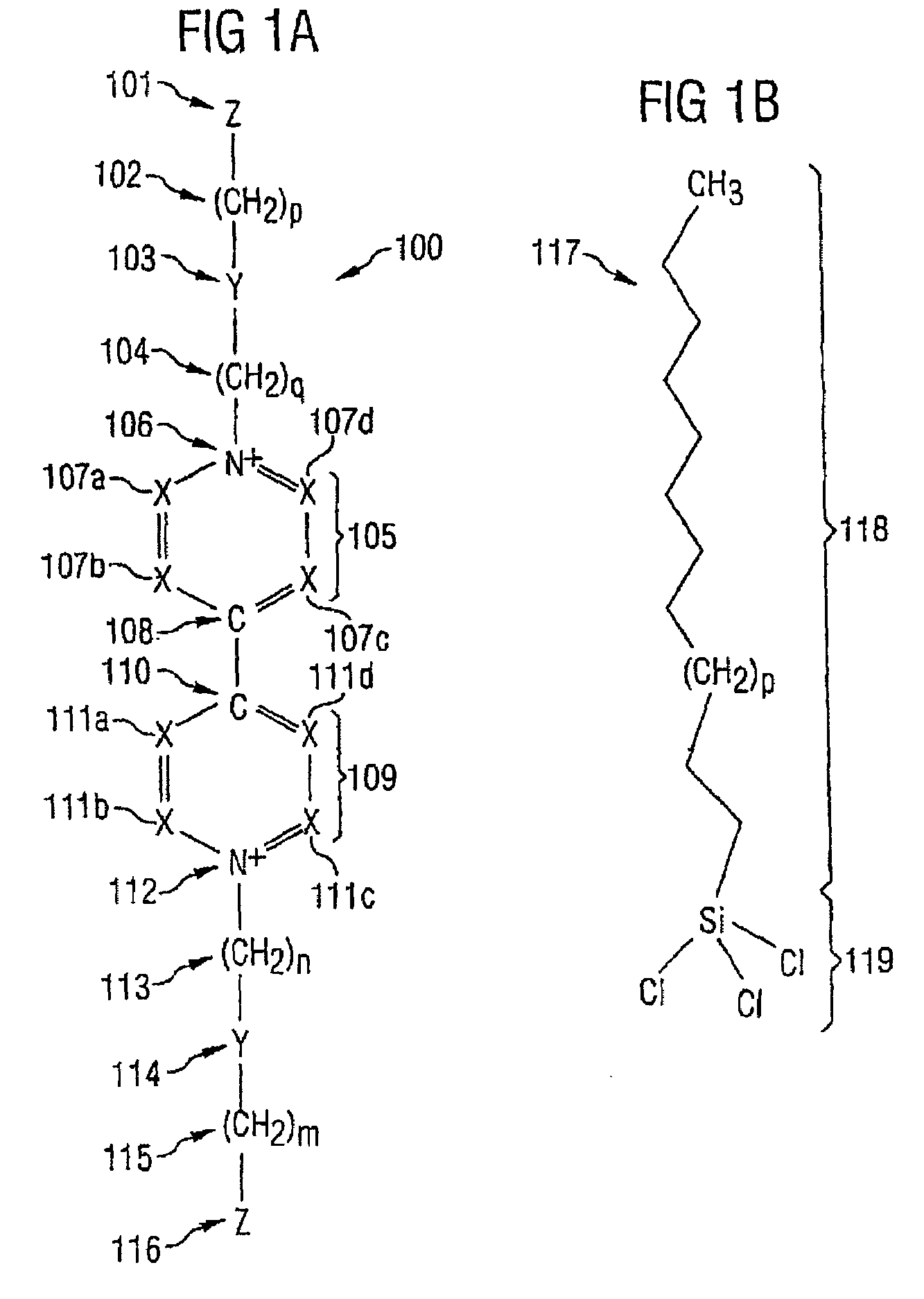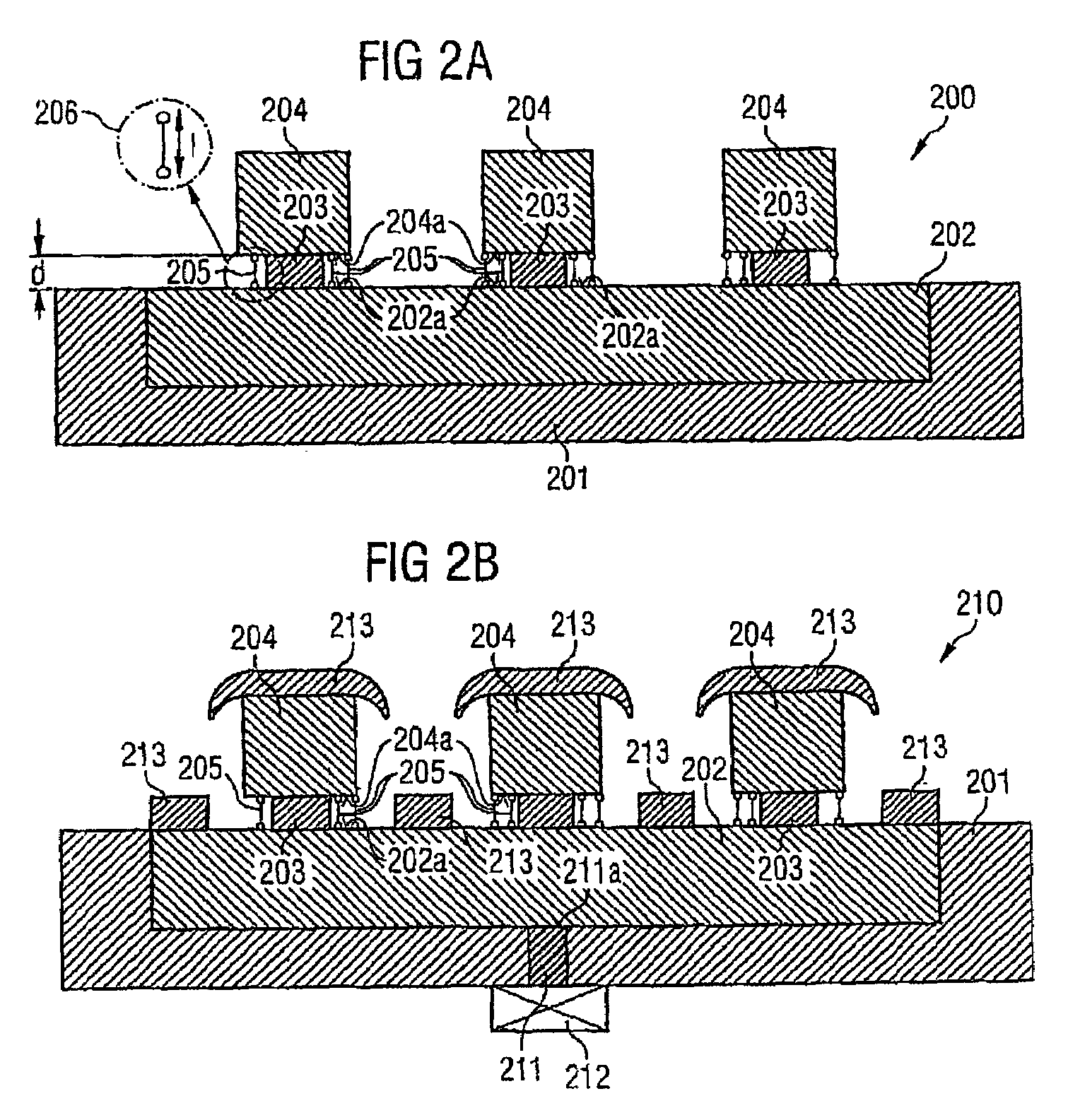Molecular electronics arrangement and method for producing a molecular electronics arrangement
a technology molecular electronics, applied in thermoelectric devices, instruments, nanoinformatics, etc., can solve the problems of reducing the number of transistors per chip, affecting the development efficiency of molecular electronic molecules, and affecting the ability to bind molecular electronic molecules, so as to reduce the amount of investmen
- Summary
- Abstract
- Description
- Claims
- Application Information
AI Technical Summary
Benefits of technology
Problems solved by technology
Method used
Image
Examples
Embodiment Construction
[0085]Firstly, a description is given, with reference to FIGS. 1A–1B, of exemplary embodiments of molecular electronic molecules as are included in the molecular electronics arrangement of the invention.
[0086]The structure of redox-active bispyridinium molecules 100 is described below with reference to FIG. 1A. As disclosed in [2], the electrical resistance of redox-active bispyridinium molecules 100 can be switched back and forth between two values, the electrical resistance being low in the reduced redox state and the electrical resistance being high in the oxidized redox state.
[0087]The redox-active bispyridinium molecule 100 shown in FIG. 1A has a few substituents (designated by X, Y, Z) which serve as spacers for a chemical element or a chemical group or for a molecule radical. Furthermore, variables p, q, n, m are shown in the bispyridinium molecule 100 shown in FIG. 1A, each of which variables assumes an integral positive value (1, 2, 3, . . . ) independently of one another.
[...
PUM
 Login to View More
Login to View More Abstract
Description
Claims
Application Information
 Login to View More
Login to View More - R&D
- Intellectual Property
- Life Sciences
- Materials
- Tech Scout
- Unparalleled Data Quality
- Higher Quality Content
- 60% Fewer Hallucinations
Browse by: Latest US Patents, China's latest patents, Technical Efficacy Thesaurus, Application Domain, Technology Topic, Popular Technical Reports.
© 2025 PatSnap. All rights reserved.Legal|Privacy policy|Modern Slavery Act Transparency Statement|Sitemap|About US| Contact US: help@patsnap.com



